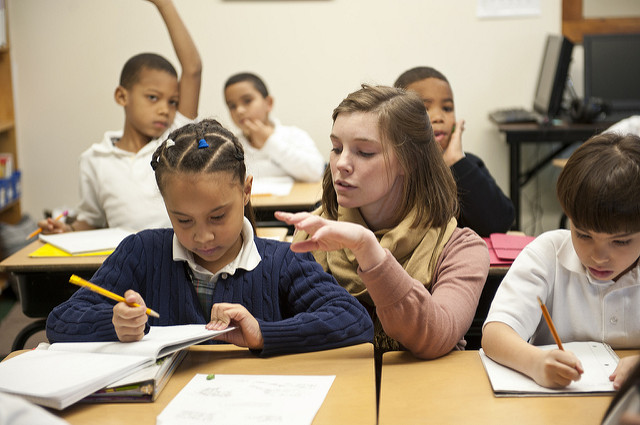Part three of a series. Read part one and part two.
In her explanation and background to the principle of holistic learning among First Peoples, Jo Chrono provides several examples of what the integration of this principle might look like in a classroom. Teachers who have already incorporated regular field trips, reflective journalling, experiential learning, place-based learning, and project-based learning into their classroom practice will easily be able to connect their teaching to this learning principle. But what I want to focus on here is something else that she mentions: The critical importance of relationships inherent in this learning principle in particular.
Education literature is well-populated with articles on the centrality of relationships in learning but there is very little discussion on how difficult maintaining healthy relationships can be. Relationships are always easy when things are going well, when there is no conflict. They are really difficult when things are not going well. And if there is ever a place where relationships can get into trouble, it’s in classrooms and in schools.
A few months ago, three students who were very angry with me waited to talk to me after school. They wanted the four of us to use a process I teach to all my students to help them to work through any conflict they may experience in their relationships. It took some time but at the end of our excavation of the incident we all realized that we had each interpreted what we saw and heard in completely different ways, thus resulting in different stories about what had happened in the classroom earlier in the day.
Over the past decade, students have told me how this process, The Communication Model, has helped them not only to repair but also to sustain relationships amongst friends and family. Emily, a former student, has written about how she used it to de-escalate conflict between an adult and some students in our school. Countless others have talked about how their relationships with siblings and with parents have been strengthened through using the model.

I am partial to the Communication model because, unlike other models for the resolution of conflict, its experiential method creates the possibility for a relationship to be strengthened by deepening mutual understanding.
The core premise of The Communication Model is that through examining our perceptions and interpretations, we can discover what we may only unconsciously hold dear. Another premise is that we are never angry about the thing we think we’re angry about. In other words, anger rears its head when we sense an attack on what we deeply value, what is critically important to our sense of self.
The problem is that other people are often completely unaware of what is important to us and so there are multiple instances each day when they may inadvertently trigger this biological self-defense system. Most often we can brush off incidents quite easily by taking a breath and moving on, but sometimes that’s not easy to do.
At this point I want to stress that anger in and of itself is not a bad thing. Perhaps because the expression of anger in our society is so often associated with violence, there is little acknowledgement of anger’s value in helping us to understand why we do the things we do. As I tell my students, anger provides a direct pathway to our core beliefs, our deepest sense of self.
It’s also interesting to note the differences in the way children are taught about anger in various cultures and within social classes. From a modern western European cultural perspective, the expression of anger is certainly gendered. It’s okay for men to express violent anger but not okay for women to do the same.
I am curious about Indigenous perspectives on the experience and expression of anger and conflict. I would like to learn about how conflict was resolved before colonization and whether there are other examples of it being resolved through games like slahal. With consensus being a common decision-making process amongst First Peoples before contact, there’s no doubt that we have much to learn from them about how to work through conflicts to arrive at a common understanding.
When those three students students processed their anger that day, we all learned a lot about each other. We learned what we each deeply valued and we realized that we all wanted the same thing: to have fairness and a sense of community in the classroom.
There is a lot of conflict in a world of systemic racism, gross inequality, and climate change impacts. If our children can learn how to work through anger to discover the values and aspirations they have in common with others with whom they are in conflict, the troubles ahead will be much easier for them to navigate.
Image: Flickr/Merrimack
Like this article? Please chip in to keep stories like these coming.





